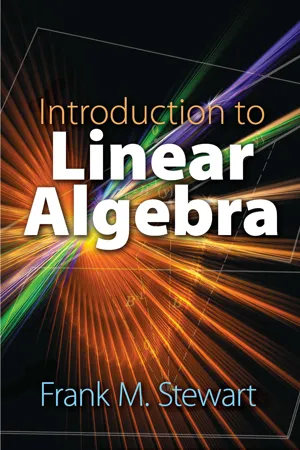![]()
CHAPTER I
INTRODUCTION
As mathematics develops, its concepts become increasingly abstract. Tiny children are already meeting a mathematical abstraction when they learn to count. Two blocks or two pencils are real and concrete, but the idea of two-ness, which they have in common, is a concept created by the mind. Arithmetic is the study of this first-level abstraction, number.
Such abstractions save tremendous amounts of time and effort. Knowing that 3 times 7 is 21, one immediately realizes that if apples cost 7 cents apiece, then 3 of them cost 21 cents, and that 3 rockets costing 7 million dollars apiece together cost 21 million dollars. A single computation solves a myriad different problems.
In elementary algebra we pass to a new level of abstraction, studying the properties of numbers in general rather than such special facts as 3 × 7 = 21. This continual increase in generality is characteristic of mathematics. We study a variety of special situations or systems. Next we try to pick out the essential features which they have in common. Finally we explore the consequences of these common properties without reference to the special situation in which they arise.
You will soon have to take a giant step in the direction of generalization, for the special systems which motivate our study are, themselves, abstract. In this chapter and the next we will examine a few examples and write out explicitly the common features which will form the basis of our further study.
Section 1. An Example
The following proposition probably sounds familiar.
If the bisectors of two angles of a triangle are equal, then the triangle is isosceles.
Try to prove it. Whether you use Euclidean methods or analytic ones, you will find it difficult indeed.* We shall prove it analytically, but we use new concepts to abbreviate the dreadful computations a little. Our real interest is in these new concepts and our preliminary calculations will be long and detailed. The reader should study these calculations very carefully, because they are typical of abstract algebra. We introduce new objects and new operations for combining them. Next we list a few of their properties (in this case equations (1.1) to (1.7)). Finally we perform algebraic operations (equations (1.11) , (1.12), etc.), using the listed properties and no others.
FIGURE 1.1
Think of the sides of the given triangle as if they were arrows laid on the ground and call them x, y, and z (see Fig. 1.1). The letters “x”, “y”, and “z” stand for the arrows themselves, not for their lengths. To denote their lengths we u...



